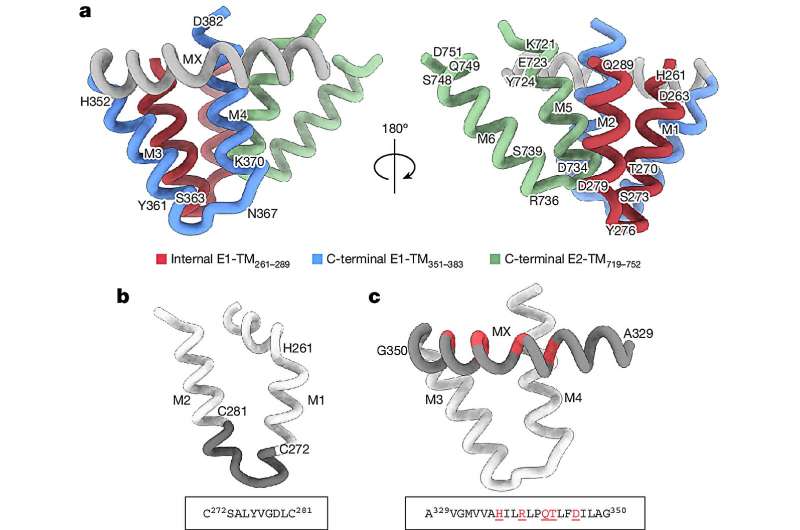This article has been reviewed according to Science X's editorial process and policies. Editors have highlighted the following attributes while ensuring the content's credibility:
fact-checked
peer-reviewed publication
trusted source
proofread
Cross-disciplinary research makes strides in hepatitis C vaccine development

Around 58 million people suffer from chronic inflammation caused by the hepatitis C virus, and 300,000 people die from the disease every year.
So far, no treatment has successfully managed to reduce the prevalence of hepatitis C in the world, and this has prompted scientists to start looking for a vaccine. However, limited knowledge of the protein complex that enables the virus to infect the cells has made this difficult.
A new study by a cross-disciplinary research team at the University of Copenhagen is about to change that.
"We are the first ever to identify the protein complex at the surface of the hepatitis C virus that enables it to bind to our cells," says Associate Professor Jannick Prentø.
"This knowledge of the structure of the protein complex will enable us to design vaccine candidates that can prevent the virus from infecting the cells," says Postdoc Elias Augestad.
The protein complex helps the virus bind to the cells. In the corona virus, it is a so-called spike protein with well-known spikes. In the hepatitis C virus, the structure is different, but the function of the protein complex is the same.
Paving the way for vaccine development
The study can be considered a blueprint for HCV vaccine development. Scientists hope to be able to use the new knowledge to develop a vaccine which will make the immune system produce antibodies that bind effectively to the surface of the hepatitis C virus and thus render it harmless.
"Expressing and cleaning up the protein complex is extremely difficult, which is why it has not been done before. The structure of these proteins on the surface of the hepatitis C virus makes them extremely vulnerable. Researchers did not know what they were dealing with, and therefore, whenever someone tried to reproduce these protein structures in the lab they would fall apart before they could get a chance to study them," says Associate Professor Jannick Prentø.
"But we managed to describe their structure, and this has enabled us to reproduce these protein complexes outside the cell and study them closely," says Associate Professor Pontus Gourdon.
The research results which have been published in the Nature journal are a result of a collaboration between two departments at the Faculty of Health and Medical Sciences at the University of Copenhagen.
Jannick Prentø from the Department of Immunology and Microbiology and Hvidovre Hospital launched the project together with Postdoc Elias Augestad. Initially, the two researchers mainly worked on the challenging project alone, but then Jannick Prentø started looking for someone at the University with the necessary expertise in structure identification of so-called transmembrane proteins—a highly specialized field, which was key to determining how the hepatitis C virus can be prevented from spreading through the body.
This led him to Pontus Gourdon from the Department of Biomedical Sciences, Head of Molecular Cardiology and Membrane Proteins, and his colleague Kaituo Wang.
More information: Elias Honerød Augestad et al, The hepatitis C virus envelope protein complex is a dimer of heterodimers, Nature (2024). DOI: 10.1038/s41586-024-07783-5



















